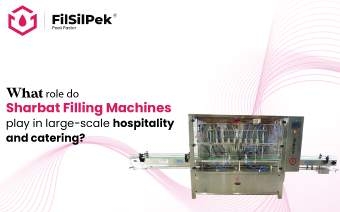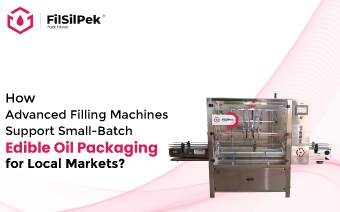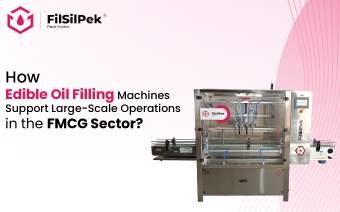The Importance of Accurate Calibration in Distemper Paint Filling Machine for Quality Assurance
Quality assurance is essential for distemper paints, where uniformity in texture, color, and volume directly impacts customer satisfaction. Achieving this level of precision hinges on the accurate calibration of filling machines, which ensures each container receives the exact volume needed. Proper calibration helps avoid underfilling or overfilling, protecting product integrity and building customer confidence.
Distemper paint filling machines make this consistency possible by delivering high-speed, precise filling with minimal deviation. In this article, we’ll explore how accurate calibration in these machines upholds quality standards, enhances operational efficiency, and strengthens brand reliability in every batch produced.
Why Calibration Matters in Distemper Paint Filling Machines?
Calibration is the process of adjusting a machine to ensure it operates within a defined range of accuracy. In the context of distemper paint filling machines, this means setting up the machine to deliver the exact volume of paint consistently. Miscalibration can lead to a variety of issues, from underfilling and overfilling to inconsistent product quality—all of which can tarnish a brand’s reputation and increase production costs.
In a competitive market where consumer loyalty hinges on consistency, calibration serves as a fundamental measure to ensure that every container of paint meets the same high standards. Let’s explore the critical reasons why accurate calibration is so important.
1. Ensuring Consistent Quality
Accurate calibration is the backbone of product consistency. Distemper paints have specific viscosity, pigment content, and texture requirements, which, if altered even slightly, can affect the product’s performance. Calibration ensures that the filling machine dispenses an exact amount of paint, maintaining the product’s viscosity and texture across every unit. Inconsistencies in filling lead to variations in the final product, making quality control more challenging and potentially leaving customers dissatisfied with their purchase.
2. Reducing Wastage and Cost Control
Overfilling or underfilling containers not only affects product quality but also impacts production costs. Overfilled containers mean excess product goes to waste, increasing raw material consumption and raising production costs. Underfilled containers, on the other hand, may not meet the expected volume on the label, leading to consumer complaints and potential regulatory issues. With accurate calibration, distemper paint filling machines can help manufacturers minimize wastage and control costs by dispensing the exact amount required in every cycle.
3. Meeting Industry Standards and Compliance
In the paint industry, manufacturers must comply with stringent standards to ensure product safety and quality. Accurate calibration of filling machines is a key factor in meeting these industry standards. Consistently filled products reflect adherence to these regulations and reduce the risk of fines or penalties. Compliance also builds brand credibility, which is especially important for paint manufacturers looking to expand their reach in both local and international markets.
4. Enhancing Operational Efficiency
Calibrated machines require fewer adjustments during production, allowing operators to maintain a smooth workflow with minimal interruptions. When a machine operates within precise parameters, the need for manual checks or recalibrations decreases, improving overall operational efficiency. This streamlined process can lead to higher production rates and reduced downtime, ultimately increasing the facility’s output.
5. Minimizing Customer Complaints and Returns
Inaccurate filling often results in customer complaints or product returns, which can be costly and damaging to a brand’s reputation. Ensuring accurate calibration from the start reduces the likelihood of discrepancies, providing customers with a consistent product every time. Satisfied customers are more likely to become repeat buyers, and reducing returns helps maintain positive customer relationships.
Calibration Process for Distemper Paint Filling Machines
Calibration is not a one-time process; it must be performed periodically to ensure the machine maintains accuracy over time. Here is a simplified process to ensure accurate calibration in distemper paint filling machines:
- Initial Setup: Set the desired volume of paint for each container based on the product specifications. This is the reference point for all subsequent fills.
- Test Run: Conduct a test fill to check if the machine dispenses the exact volume. Compare the actual fill against the standard to identify any discrepancies.
- Adjust and Re-verify: If discrepancies are observed, adjust the settings and perform another test run. Repeat until the machine dispenses the exact required volume.
- Periodic Calibration: Over time, machine parts may wear, impacting the fill volume accuracy. Scheduling periodic calibration ensures long-term consistency in product quality.
- Documentation and Record Keeping: Keeping detailed records of each calibration session helps in tracking machine performance over time and identifying when recalibration is necessary.
The Role of Automation in Calibration
Automation in calibration significantly enhances accuracy and efficiency in distemper paint filling machines, integrating real-time monitoring, precision controls, and data-driven adjustments for unmatched consistency. Automated calibration systems, equipped with embedded sensors and digital feedback mechanisms, ensure precise fill levels by automatically adjusting for minor deviations detected during operation. These systems continuously align actual fill volumes to pre-set standards, allowing consistent output with minimal human intervention. Predictive maintenance capabilities also help prevent unplanned downtime, signaling when recalibration or component replacements are necessary to maintain optimal machine performance. Data logging features provide detailed tracking for each calibration session, making it possible to analyze fill trends, improve system accuracy, and strengthen compliance efforts.
- Real-time sensors detect fill variances, immediately correcting them within the production process
- Digital controls deliver precision, minimizing human error and reducing manual calibration needs
- Predictive maintenance alerts indicate when recalibration or part replacements are required
- Continuous data logging enhances traceability and aligns with regulatory requirements
- Historical data analysis supports performance enhancements and process efficiency
Wrapping it up
Accurate calibration through automation is essential for ensuring consistent quality and efficiency in distemper paint filling machines.
Are you ready to take your filling process to the next level? Let’s start a conversation! Reach out to us at [email protected] and explore how we can upscale your operations together.
What role do sharbat filling machines play in large-scale hospitality and catering?
In the world of hospitality and catering, managing beverage service at scale isn’t just about..
How Advanced Filling Machines Support Small-Batch Edible Oil Packaging for Local Markets?
Consumers are becoming increasingly conscious of the quality, freshness, and sourcing of edible oils..
How Edible Oil Filling Machines Support Large-Scale Operations in the FMCG Sector?
Edible oil production in the FMCG sector demands high throughput, precision, and compliance with food safety regulations…



